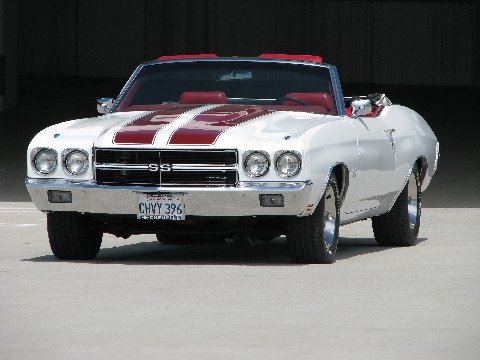Although the recession knocked about 30% of the value out of the market for classic and collectible cars back in 2007, the economy seems to have recovered and values of classic cars have bounced back too. As we reported here earlier this month, the Hagerty Blue Chip Collector Car Index saw a 37.4% increase in value between December 2012 and December 2013. After such strong a performance in 2012, many experts expected the collectible auto market’s bubble would burst this year, but the market just continued to grow from January 2014 to May 2014, and for many investors, classic cars have proven to be a very profitable way to store and gain wealth.
The trend shows that investments in cars have been outperforming more conventional asset classes and those looking for opportunities in the stock market would have done better if they had invested in the classic car marketplace instead. Collectible cars are also real, tangible investments, and a lot more fun than having your money invested in paper that is stored in a bank somewhere. However, a classic car will involve some unique costs as an investment vehicle (like storage and maintenance) and just like stock or real estate, the amount of money you might make can depend on how long you keep it. A savvy investor will also know the right time to buy and the right time to sell.
Although car collecting can result in to financial gain, for every investor who does make money, there are also many more that will lose more money than they make. It is easy to forget that cars with astronomical selling prices probably had some astronomical repair and restoration bills along the way too. Even though some people seem to be able to make money on a collectible car without really trying, if you want to make money as an investor, most experts agree that it is best not to make purchases based on emotion. For an investor, it is usually a better strategy to keep the long haul in mind and hold onto a collectible car for at least five years in most cases.
Although today might look like prime time for investing in classic cars, there are some relative points to be considered:
- Time is money and making a profit on a car will likely be relative to the time and money you spend on it.
- Always obtain a professional pre-purchase inspection before buying any vehicle.
- Remember that the net capital gains tax rate is a maximum 28% on the profit made from selling a collectible car.
- You will have to spend money on any vehicle you purchase as even the best cars will have some issues that must be dealt with.
- Try to purchase cars that are in the best possible condition and remember that extensive rust can make a restoration far more expensive than anticipated.
- Don’t purchase a car solely because it seems like it is underpriced for the market. It is better to buy a car that you will actually enjoy owning for a while.
- Vehicles purchased as investments are not the same as weekend race toys. Combining the two will surely jeopardize your investment.
- Remember that the value of a low-mileage car will be the highest if you don’t drive it. It is also a lot less risky, as just one minor accident can greatly reduce the value of your investment.
- Never forget that car values can move up and down at any time and predicting the best time to buy or sell is more of an art than it is a science.

